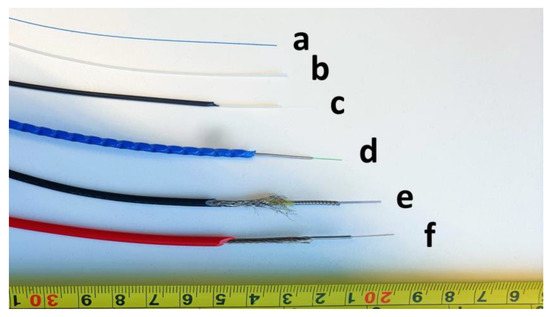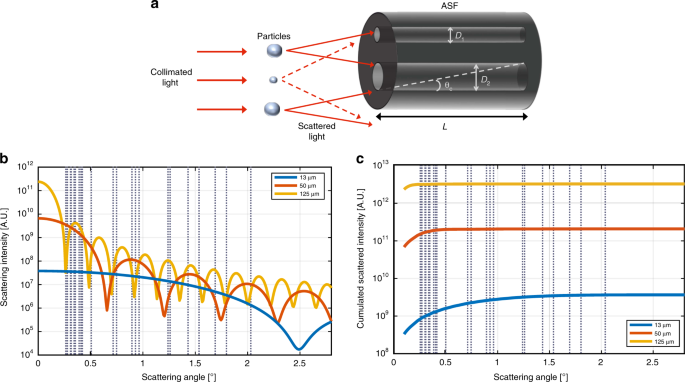Increasing Manufacturing Productivity with an Optical Fibre Diameter Analyser
Increasing Manufacturing Productivity with an Optical Fibre Diameter Analyser
Blog Article
Optimize Your Fiber Optic Efficiency: Recognizing Optical Fibre Size Analyser Technology
The performance of fibre optic systems is seriously affected by the accuracy of their size, a variable usually overlooked in the pursuit of ideal signal integrity. Recognizing the innovation behind optical fiber size analysers exposes the intricate equilibrium in between measurement accuracy and manufacturing quality. These devices not just boost conformity with sector criteria yet also supply real-time understandings that can preemptively attend to potential concerns. Nonetheless, the effects of their use extend past simple measurement; they can fundamentally change the landscape of fiber optic effectiveness. What factors should one consider to harness their complete possibility?
Relevance of Optical Fibre Diameter
The diameter of optical fiber plays an important function in identifying the efficiency and performance of communication systems. Conversely, smaller sized diameters tend to support less modes, which can boost signal clarity and decrease crosstalk.

In addition, comprehending the diameter's implications can bring about set you back savings by minimizing the demand for signal amplification and repeaters in comprehensive networks (optical fibre diameter analyser). To conclude, the importance of optical fibre size can not be overstated, as it straight influences the overall effectiveness and integrity of modern interaction systems

How Diameter Impacts Signal Quality
Signal high quality in optical fiber systems pivots dramatically on the size of the fiber. A smaller diameter can lead to greater attenuation prices, resulting in signal loss as light travels via the fibre.
Conversely, bigger diameters usually permit boosted light capture and lowered modal dispersion, boosting signal clearness. In multimode fibres, a bigger core diameter can sustain multiple light settings, yet it might likewise introduce intermodal dispersion, which can break down signal top quality. Consequently, choosing the optimal fibre diameter is important for accomplishing the wanted efficiency in certain applications.
Furthermore, the communication in between the fibre diameter and the wavelength of the light used plays a critical role in establishing the effective transmission range and overall signal honesty. Recognizing just how fibre size influences signal top quality is essential for network designers and engineers striving to optimize optical fibre systems for dependable, high-speed information transmission.
Review of Size Analyser Technology
In lots of optical fibre production processes, precise measurement of fibre size is vital for ensuring constant performance and quality (optical fibre diameter analyser). Diameter analysers are innovative tools developed to examine the physical measurements of optical fibres with high accuracy. They use advanced optical and laser innovations to determine the size, ovality, and concentricity of the fibre, hence giving essential information for quality control
These analysers can operate in-line during the production procedure or as component of off-line screening procedures. In-line systems allow real-time surveillance, permitting makers to adjust criteria immediately, thereby keeping optimum production conditions. Off-line analysers, on the other hand, offer comprehensive evaluations of batches, ensuring that any kind of variances from specified tolerances are recognized and attended to.
Size analysers significantly add to the reduction of problems in optical fibers, boosting general product integrity. By regularly measuring key criteria, these technologies facilitate compliance with industry standards and specifications. As the demand for high-performance optical fibres remains to climb, the function of diameter analysers becomes increasingly crucial in achieving the preferred top quality and efficiency standards in fiber optic systems.
Trick Functions of Fiber Diameter Analysers
Although various designs of fiber diameter analysers exist, they commonly share a number of vital attributes that improve their functionality and reliability. One of one of the most considerable functions is high-resolution measurement capabilities, which ensure exact size readings, crucial for keeping quality assurance in fibre manufacturing. Additionally, several analysers integrate innovative optical sensors made to detect minute variations in fiber diameter, therefore providing important data for procedure optimization.
An additional vital attribute is real-time monitoring, allowing operators to obtain immediate comments on fiber diameter throughout the production process (optical fibre diameter analyser). This capacity assists in quick changes and decreases the probability of flaws. Several analysers also come geared up with user-friendly user interfaces, enabling operators to conveniently navigate via setups and data outputs
In addition, durable information storage space and evaluation functionalities are crucial for tracking historical efficiency fads and guaranteeing compliance with market requirements. Some models also use connectivity choices for integration right into existing production control systems, boosting general functional efficiency. Small and mobile designs permit for adaptable release within manufacturing atmospheres, making sure that top try this quality guarantee processes are smooth and efficient. These functions collectively add to the efficiency of fiber diameter analysers in enhancing fibre optic efficiency.
Best Practices for Fibre Optimization

First, regular calibration of optical fibre diameter analysers is important. This makes sure precise dimensions and lessens prospective discrepancies that might impact performance. Next, preserving a tidy workplace is important; dirt and impurities can cause signal destruction.
Furthermore, it is essential to choose fibers that fulfill details application demands. This includes evaluating factors such as attenuation, transmission capacity, and ecological problems. Proper installment techniques must likewise be adhered to, including staying clear of sharp bends and extreme stress, which can jeopardize fibre integrity.
Moreover, using innovative surveillance systems can facilitate real-time efficiency assessments, enabling punctual recognition of problems. Routine testing and upkeep must be conducted to make sure that fibres remain within optimal functional parameters.
Last but not least, training personnel on the most up to date fiber optimization technologies and techniques will certainly enhance their capability to implement effective methods. By following these ideal techniques, organizations can significantly improve the performance and life-span of their optical fiber systems, making sure reliable communication and data transfer.
Final Thought
To conclude, the integration of optical fiber diameter analyser innovation is critical for taking full advantage of fiber optic performance. By guaranteeing accurate measurements of fibre measurements, these analysers considerably enhance signal top quality and decrease losses during information transmission. Normal calibration and maintenance of the analysers are critical to copyright ideal performance and conformity with industry criteria. Ultimately, the application of this innovation helps with boosted data transmission prices and reinforces signal stability, adding to the general effectiveness of fiber optic systems.
Signal high quality in optical fiber systems hinges dramatically on the size of the fibre.In many optical fibre production procedures, precise dimension of fiber size here are the findings is important for ensuring regular performance and top quality. As the demand for high-performance optical fibers continues to rise, the role of size analysers comes to be progressively vital in accomplishing the preferred top quality and efficiency requirements in fibre optic systems.
These attributes collectively add to the efficacy of fiber diameter analysers in maximizing fibre optic performance.
In verdict, the integration of optical fibre diameter analyser technology is critical click now for maximizing fibre optic efficiency.
Report this page